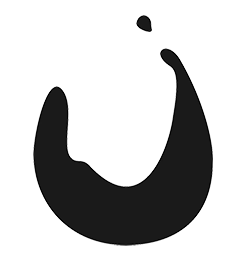2020 Joseph Colin Saint-Aubin ‘Sept Terroirs’
Joseph Colin comes from Burgundy royalty. His dad is Pierre Colin, his brother is Pierre Yves Colin Morey aka PYCM, and the family owns some of the most sought after vines in the world. Purity is the word to describe Joseph Colin’s wines and this rockstar comes from 20+ year old vines located in Saint-Aubin. It is pure, laser focused and highly allocated. Only 24 bottles available!
Sustainable farming practices, hand-harvested, native yeast fermentation, & unfined/unfiltered.
$75.00
Out of stock
“The wines are all top examples of this most sacred of Chardonnay terroirs, with electricity and verve that is so sought yet so rarely found.”
Joseph Colin is the son of Marc Colin and the younger brother of Pierre-Yves Colin. After Pierre-Yves left in 2003 to start his now-famous PYCM, Joseph took over Domaine Marc Colin with his two younger siblings, having worked with his father since 1993 at the age of 19. In 2017 Joseph followed in his older brother’s footsteps, by peeling 6+ hectares from the original family property to begin his own story.
This process of bestowing the oldest children with some of the most beautiful vines in the world to make their own way in the wine world is a Burgundian tradition. In the case of the Colin family, the parcels they were given include some of the choicest nuggets of Chardonnay soil on the planet, with the mother lode centered in and around St. Aubin, Puligny and Chassagne. Having started working with his father full-time at such a young age, Joseph knows the rocks and vines in this white Burgundy mecca like few others, meticulously caring for each parcel like his own personal garden. He has a hands-off approach in the cellar, fermenting with indigenous yeast and aging all of the wines in 350L barrels on their fine lees until bottling.
CHARDONNAY
As the most popular white grape for growing and consuming, Chardonnay can be made in a wide range of styles. These styles can vary from a sparkling Blanc de Blanc, or fresh fermented in stainless steel, to rich and creamy white wine aged in oak barrels. Notable regions for this grape include Chablis or Burgundy in France, Central Coast, Napa, and Sonoma in CA, and Western Australia. When pairing with food, consider the characteristics of your wine first. No brainer pairing options include seafood, salads, and white meat. Chardonnay, with its vast versatility, is everyone’s best friend.
BURGUNDY, FRANCE
Burgundy is a historical region in east-central France that covers a wide area with ranging climates. The large number of producers and appellations within Burgundy can make the region seem complicated to the eye. At its essence though, Burgundy can be quite simple. This is the home for Pinot Noir and Chardonnay, and these wines are second-to-none around the world. Burgundy winemakers were the pioneers for premium Chardonnay production and continue to provide a benchmark of excellence in viticulture and winemaking for all of their varieties.
Vineyard location is extremely important in Burgundy. The location will determine their quality level within the Burgundy appellation hierarchy. The highest-quality vineyards will generally have a south or southeast facing exposure providing the most access to sunlight and offering protection from westerly winds. These wines may be listed as premier cru or grand cru on the bottle label. Soils in Burgundy can vary depending on the area, but you’ll find many of them are rich in limestone and clay. Burgundian wines can age for many years if stored properly and will often hit their peak drinking age 5-10 years after production. Chablis, the Côte d’Or, Côte Chalonnaise, Mâconnais and Beaujolais are all appellations within Burgundy that have different rules and produce different styles of wines. Perhaps even more well-known are the sub-appellations within. The small villages of Corton, Montrachet, Meursault, and so on have reputations for producing the best white wine in the world.







